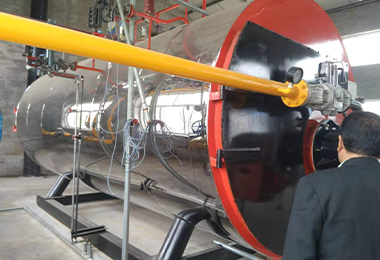
Dec . 26, 2024 10:20 Back to list
Understanding Low Pressure Steam Systems for Efficient Operation and Maintenance
Understanding Low Pressure Steam Systems
Low pressure steam systems are an essential component in various industries, offering a versatile and efficient means of generating heat and energy. Unlike high pressure steam systems, which operate at pressures typically exceeding 15 psi, low pressure steam systems usually function below this threshold, often between 0.5 to 15 psi. Understanding the basics of low pressure steam can lead to improved operational efficiency, safety, and cost-effectiveness in industrial applications.
The Basics of Low Pressure Steam
Steam is created when water is heated to its boiling point, resulting in vapor that can transfer heat across distances. In a low pressure steam system, the steam is produced from a boiler, where water is heated by burning fuel or through electrical means. This steam can be used for heating, power generation, or even in various industrial processes that require thermal energy.
One of the main reasons industries choose low pressure steam is for its efficiency in transferring energy. Since lower pressure steam has a larger volume compared to high pressure steam, it can carry more heat energy to the point of use without the need for complex and costly equipment.
Applications of Low Pressure Steam
Low pressure steam systems find application in numerous industries. In the food and beverage sector, low pressure steam is often used for cooking, sterilization, and cleaning processes. In hospitals, low pressure steam is essential for sterilizing medical equipment and maintaining a sanitized environment. Additionally, many HVAC systems utilize low pressure steam for space heating.
Moreover, low pressure steam is commonly used in processes that involve heat exchangers, where hot steam transfers its heat to a secondary medium. Industries dealing with chemicals, pharmaceuticals, and textiles also rely heavily on low pressure steam to facilitate essential production processes.
Advantages of Low Pressure Steam Systems
low pressure steam pressure

One of the significant advantages of low pressure steam systems is their lower operational cost. These systems don't require extensive safety measures and equipment associated with high pressure systems, which can significantly reduce maintenance costs. The lower temperature and pressure levels also mean that the risk of catastrophic failures is minimized, enhancing workplace safety.
Furthermore, low pressure steam is often generated using more sustainable energy sources, leading to a smaller carbon footprint. Many facilities can utilize waste heat from other processes to generate steam, thereby optimizing energy use and reducing overall emissions.
Efficiency and Performance
To ensure maximum efficiency from low pressure steam systems, regular maintenance and monitoring are critical. Issues such as steam leaks, condensate return problems, and inadequate insulation can lead to significant production losses and increased costs. Implementing best practices such as regular inspections, proper insulation, and utilizing automatic controls can help in maintaining system efficiency.
Another key feature of low pressure steam systems is the ability to utilize steam traps that help in the removal of condensate and air from steam systems. Proper operation of these steam traps is crucial as it ensures that the steam maintains pressure and optimal conditions for transferring energy.
Conclusion
In conclusion, low pressure steam systems play a vital role in modern industry. Their applications span from food processing to pharmaceuticals, demonstrating their versatility and importance in various sectors. The benefits of operational efficiency, cost-effectiveness, and enhanced safety make low pressure steam an attractive option for energy and heat generation.
By recognizing the significance of these systems and maintaining them properly, industries can not only improve their productivity but also contribute to a more sustainable future. As we continue to innovate and seek out efficient energy solutions, low pressure steam systems remain a fundamental technology, driving progress in multiple areas of industry.
-
High-Efficiency Commercial Oil Fired Steam Boiler for Industry
NewsJul.30,2025
-
High-Efficiency Biomass Fired Thermal Oil Boiler Solutions
NewsJul.30,2025
-
High Efficiency Gas Fired Thermal Oil Boiler for Industrial Heating
NewsJul.29,2025
-
High-Efficiency Gas Fired Hot Water Boiler for Sale – Reliable & Affordable
NewsJul.29,2025
-
High Efficiency Biomass Fired Hot Water Boiler for Industrial and Commercial Use
NewsJul.29,2025
-
High-Efficiency Biomass Fired Hot Water Boiler for Industrial Use
NewsJul.28,2025
Related PRODUCTS






















